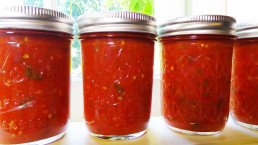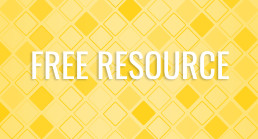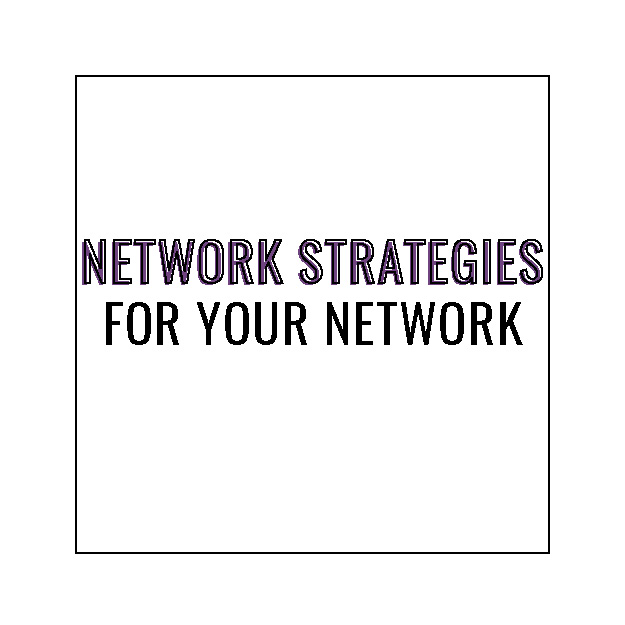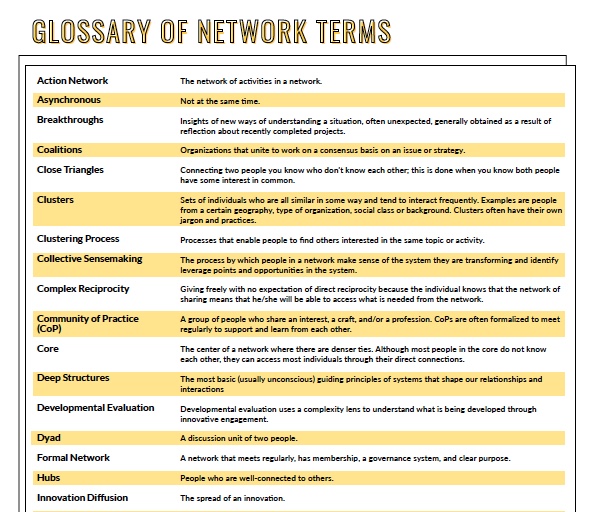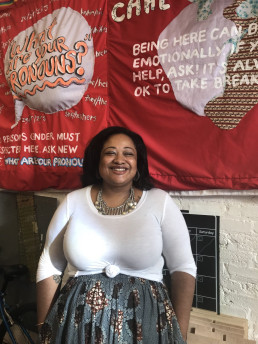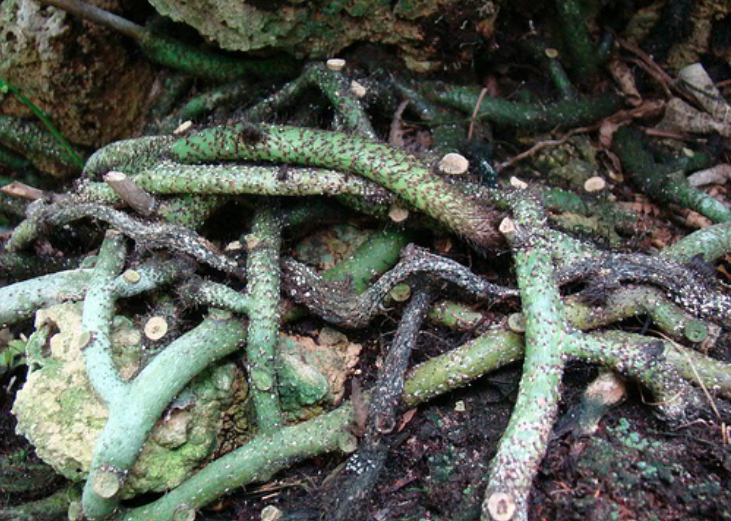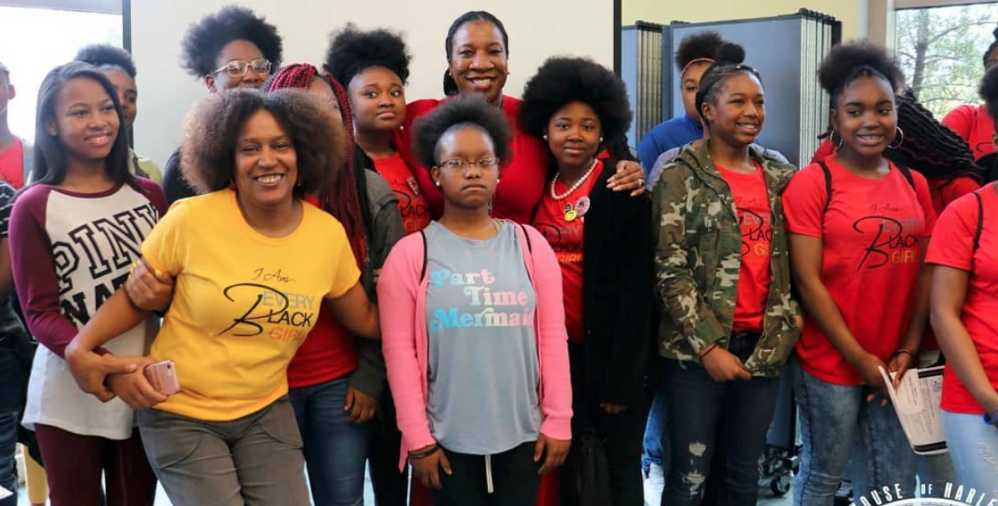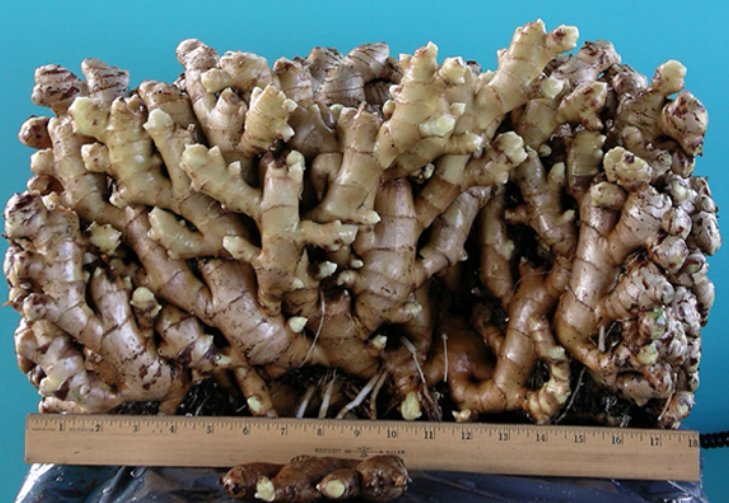Inclusive Networks Are Shaping Our Lives Right Now - Are They Governance?
December 5, 2018Network Leadership,The Big Picture,Network Structure and Governance,Blog
[ap_spacing spacing_height="15px"]About six months ago I was introduced to a deeply remarkable development – and its even more profound implications – by two people who didn’t know each other and with whom I’ve talked in depth almost every week since then.
[ap_spacing spacing_height="15px"]This development electrifies me. I have long felt that achieving effective, inclusive, decentralized governance would require a major, perhaps insurmountable effort. But these two folks have opened my eyes to an unexpected form of such governance manifesting right now all around the world.
[ap_spacing spacing_height="15px"]What is that emerging inclusive, decentralized form of governance?
[ap_spacing spacing_height="35px"]
COMPLEX INCLUSIVE NETWORKS AS GOVERNANCE
[ap_spacing spacing_height="15px"]These new friends pointed out rapidly increasing activity of networks that embrace
- multiple sectors (public sector, private sector, and civil society)…
- multiple stakeholders (diverse parties involved in various issues and systems)… and
- multiple scales (ranging from local to global).
[ap_spacing spacing_height="15px"]They shared their thrill at seeing this complex activity emerging as a new form of whole-system engagement and governance that could transcend governMENT as we’ve come to know it. (See the examples and analyses referenced at the end of this email.)
[ap_spacing spacing_height="15px"]My companions in this new inquiry and sense of possibility are Tracy Kunkler and Steve Waddell. Both work with transformationally oriented stakeholder networks, Tracy mostly with local and regional systems, Steve at all levels including global networks self-organizing around the UN’s Sustainable Development Goals.
[ap_spacing spacing_height="35px"]
SOME BIG QUESTIONS FOR THE BIG PICTURE
[ap_spacing spacing_height="15px"]Last month, at the Frontiers of Democracy conference in Boston, Steve, Tracy and I presented a session entitled “How Do We Midwife the Emergence of Wise Governance Networks?”
[ap_spacing spacing_height="15px"]Our session description asked a few additional questions:
- Are you sensing new patterns of societal governance in multi-sector networks?
- Are they more diverse and adaptive to the scale and pace of change than governments?
- Might they become powerful governance structures, growing to include government, but also transcending it?
- How can we influence the emergence of these to be democratic, powerful, and wise?
[ap_spacing spacing_height="15px"]Note that by “governance” we don’t mean governMENT (although that’s part of it), but ALL the things groups, organizations and institutions do to shape what happens on the ground to deal with societal issues and goals and how our collective lives unfold.
[ap_spacing spacing_height="15px"]Of course when we look at what governMENTs do, they definitely impact that. But so do businesses and civil society groups. So when a network involves players from the public sector, the private sector, AND civil society, we are talking about a multi-SECTOR network.
[ap_spacing spacing_height="15px"]And if we look at issues (like poverty, human rights, or climate change) or at social systems (like food systems, health care systems, or educational systems), and we find that groups across the spectrum of roles and perspectives are trying to work together to have some kind of shared impact on the issue or system they’re all part of, we are talking about multi-STAKEHOLDER networks.
[ap_spacing spacing_height="15px"]And if any of these include players at various different levels of functioning – local, state, regional, national, international, global, etc. – we are talking about multi-SCALE networks.
[ap_spacing spacing_height="15px"]These are not so much networks of individuals as networks of groups, organizations, and institutions. When they begin to weave together into multi-sector, multi-stakeholder, multi-scale (MS3) networks, they become increasingly inclusive, often by asking “Who else should be part of this work, this conversation?” With true inclusiveness, the level and texture of impact they have – and could have – begins to boggle my mind. They present the possibility of millions of committed eyes, ears, heads, hands, and hearts working together on the ground in every aspect of any given issue or system. (If you are concerned about the possible totalitarian implications of this, please see my asterisked* note below.)
[ap_spacing spacing_height="15px"]And IF they are actually working together effectively – addressing concerns, developing shared goals and standards, seeing beyond narrowly framed interests – what we have is a whole new level of whole-system governance of, by, and for whole systems. By being part of groups who are part of these networks, whoever is involved in a collective challenge or vision can be engaged in addressing it. A tremendous amount of competence, passion, and knowledge can be tapped for positive evolution in that realm – indeed, in all realms.
[ap_spacing spacing_height="15px"]At least that’s the vision I glimpsed, and it hooked me.
[ap_spacing spacing_height="35px"]
PROVIDING A KEY MISSING INGREDIENT
[ap_spacing spacing_height="15px"]When we asked the attendees in our workshop what they were experiencing in their networks, they told us that the unprecedented diversity of the participants was showing up as a real problem. These networks include people from different cultures and worldviews (think governments, businesses, and nonprofits), different sides of various issues, different constituencies, and so on, quite in addition to different demographics, experiences, organizational styles, and more….
[ap_spacing spacing_height="15px"]I realized that many people in the networks I’M connected to – facilitators, mediators, organizational consultants, process designers, conveners, community organizers, and so on – have tremendous know-how that can help people work creatively across differences. (Much of this expertise is reflected in the wise democracy pattern language, most notably in the pattern “Using Diversity and Disturbance Creatively” but actually throughout the pattern language.) Since these roles form a professional category that specializes in helping different people work together effectively, I realized that those professions are a vital ingredient for the successful emergence of this new whole-system form of governance. That role urgently needs to be acknowledged and strengthened as a factor in how all this unfolds.
[ap_spacing spacing_height="35px"]
WHAT ABOUT WISE DEMOCRACY?
[ap_spacing spacing_height="15px"]Talking about all this as a new form of governance immediately raises the question of where We the People are in all this – where are we, the citizens … we, the communities? What is our role and our power? Where exactly do we – or should we – fit in this new governance picture? What public answerability should stakeholder networks have – and vice versa? Should citizen deliberative councils play a major role in focusing the goals of stakeholder networks or reviewing their activities? Might crowdsourcing solutions or priorities engage the public in issues being addressed by stakeholder networks that require whole-community involvement? (Note that Citizen/Stakeholder Balance was part of the wise democracy pattern language long before I met Tracy and Steve.)
[ap_spacing spacing_height="15px"]This focus on stakeholder networks also raises – for me – the question of how we can increase the likelihood that the results of such coordinated whole-system activities are wise. To what extent will these networks take into account what needs to be taken into account for long-term broad benefit? How can we ensure that oft-overlooked sources of wisdom get included in stakeholder network deliberations?
[ap_spacing spacing_height="15px"]I’ve been asking such questions for years as my “wise democracy” vision has developed. I have some thoughts about possible answers, but those thoughts are barely a beginning. Fortunately, people like Tracy and Steve also find these questions compelling, realizing their importance if this emerging governance-through-inclusive-networks phenomenon is going to end up being an actual long-term blessing.
[ap_spacing spacing_height="35px"]
TWO IMPORTANT PIECES OF WISDOM
[ap_spacing spacing_height="15px"]Two big-picture insights about these questions can help guide our thinking.
[ap_spacing spacing_height="15px"]1. First of all, the diversity and scope of the people and groups involved – IF they are truly inclusive and successfully working together – automatically means that a wide range of perspectives, experiences, interests, needs, and information will be taken into account. It is only by including these and taking them seriously that the people in these diverse networks will be able to function well together. And, in doing so, they will inherently be taking into account much of what needs to be taken into account. Because of the diversity of concerns and needs considered, these networks will realize “what’s needed for long-term broad benefit”, thereby moving us a long way towards collective wisdom.
[ap_spacing spacing_height="15px"]2. Secondly, advocates of deliberative democracy have pointed out complementary roles for citizens and stakeholders who function as experts, as embodied in the formula Experts should be on tap, not on top. This formulation is supported by cognitive science that recognizes that facts and reason cannot themselves lead to a decision. They can provide us with much understanding of what is going on in a situation, but in order to make a decision we have to WANT something – which necessarily involves our desires, feelings, values, and needs. Although these can be defended by reason, they can’t be derived solely through reason; they are fundamental. So in a democracy it is the people’s needs and dreams, the community’s values, the common interest that should properly guide decision-making, not experts.
Yes,we the people need the advice of experts like stakeholders and researchers to help us understand the actual conditions and dynamics of life well enough to satisfy our needs and manifest our values in the complexity of the real world. But WE ARE the ultimate experts regarding our needs, our values, our longings, and our everyday experience.
[ap_spacing spacing_height="15px"]So there is potential for tremendously effective wisdom to emerge from the dense diversity and broad reach of inclusive stakeholder networks and the kind collective wisdom about which the wise democracy pattern language offers so much guidance.
[ap_spacing spacing_height="15px"]The inquiry into this prospect, and the work to raise our awareness of it, have just begun. I’d like invite you into both of these. What are your thoughts? What do you think should be attended to and done? What role(s) might you play? Let me know.
[ap_spacing spacing_height="25px"]Coheartedly,
Tom
[ap_spacing spacing_height="25px"]* Networks for surveillance and control are necessarily top-down. What I am talking about here are self-organizing networks of diverse groups and organizations trying to work together. They are not networks of individual agents working at the street level for centralized power. Multi-sector, multi-stakeholder, multi-scale networks are complex, multi-faceted systems that do not lend themselves to oppressive control or co-optation by central authorities, although attention is warranted to ensure that remains true as network governance evolves.
[ap_spacing spacing_height="35px"]
REFERENCES FOR EXPLORING EMERGING INCLUSIVE NETWORKS AS GOVERNANCE
[ap_spacing spacing_height="15px"]
[ap_spacing spacing_height="15px"]
[ap_spacing spacing_height="15px"]
[ap_spacing spacing_height="15px"]
[ap_spacing spacing_height="15px"]
Metagovernance of Governance Networks
[ap_spacing spacing_height="15px"]
Multi-Stakeholder Initiative Database
[ap_spacing spacing_height="15px"]
New York’s Juvenile Justice System
[ap_spacing spacing_height="15px"]
[ap_spacing spacing_height="15px"]
[ap_spacing spacing_height="15px"]
“Global Governance Enterprises: Creating Multisector Collaborations” (2016)
[ap_spacing spacing_height="15px"]
“Multi-stakeholder Processes for Governance and Sustainability: Beyond Deadlock and Conflict” (2002)
[ap_spacing spacing_height="45px"]
Orignially published at tomatleeblog.com on July 9, 2017
[ap_spacing spacing_height="45px"]
We encourage you to comment on this post so we can hear about your thoughts and experience.
[ap_spacing spacing_height="60px"]
A Network Connector Story
December 3, 2018Network Mindset,Network Processes,Blog,Network Leadership,Introductions,Self-Organizing,The Big Picture
[ap_spacing spacing_height="20px"]
First, An Introduction [ap_spacing spacing_height="25px"]
For a long time, we've trained our eyes to see things with edges and boundaries: organizations, countries, selves. Things with edges and boundaries feel manageable and solid. [ap_spacing spacing_height="10px"]
But the world is changing at an alarming rate, and the old ways of seeing are not quite up to the vertigo of a fast-paced universe. We need new ways of understanding our world that take into account new possibilities. [ap_spacing spacing_height="10px"]
So, we start noticing networks –the relationships among people and the patterns those relationships create. Increasingly, we are realizing that it’s through networks that things get done. People go outside teams, organizations, and even countries to connect with those who can help them succeed. And, using social media, we can now collaborate and engage as easily with people around the globe as we can with people in our hometown. [ap_spacing spacing_height="10px"]
We soon start to notice that all networks aren’t the same. Certain patterns in networks, such as a hub and spoke, are great when you want control. But when you need lots of innovation and aren’t at all sure what will work, bringing together people from different networks who have different perspectives and backgrounds can generate transformative experimentation. [ap_spacing spacing_height="10px"]
But bringing together people effectively is not easy. It requires a whole set of new skills embodied in a new role we call a Network Weaver. A Network Weaver is someone who is aware of the networks around them and explicitly works to make them healthier (more inclusive, bridging divides). Network Weavers do this by connecting people strategically where there's potential for mutual benefit, helping people identify and join with others around their passions, and serving as a catalyst for self-organizing groups. [ap_spacing spacing_height="40px"]
A Tale of Network Connecting [ap_spacing spacing_height="20px"]
Nestled in the Appalachian foothills of southeastern Ohio is the ACEnet Food Ventures Center, a kitchen incubator where people can rent the use of equipment to process specialty food products. The goal of the Center is to help as many people as possible start local food businesses, even if they have very little money (as is the case for many people in this region). [ap_spacing spacing_height="10px"]
From the start, ACEnet staff knew they did not have the resources to provide entrepreneurs with the assistance they needed to be successful, so they developed another strategy. They spent much of their time strategically connecting entrepreneurs with each other. Here’s a typical scenario. [ap_spacing spacing_height="10px"]
It was a blue-sky October afternoon in 1995, and Bill –network weaver extraordinaire –was standing on the loading deck of the newly completed kitchen Incubator where start-up entrepreneurs came to make their specialty food products. Craig, from Frog Ranch Salsa, was loading cases of his award-winning product into his truck and grousing about the high cost of jars. [ap_spacing spacing_height="10px"]
Right then, another truck pulled up to the dock, and Betty – one of the owners of another salsa producer – hopped out and started unloading cases of empty jars that would be filled later that day. Bill immediately introduced Craig to Betty, encouraging them to compare notes about the quality of tomatoes that season and local bands that were playing in town that weekend. [ap_spacing spacing_height="10px"]
Network Weavers are continually making connections between people –but they are always connecting strategically. They point out commonalities that create a foundation for mutual benefit. They also help people figure out if they have the kind of personal and emotional connection that will enable them to do things together. [ap_spacing spacing_height="10px"]
The two were now laughing and joking, so Bill introduced an opportunity. They both used the same jar for their salsa. Couldn’t they order jars together and significantly lower the price? Craig and Betty both thought this idea had some real potential, so Bill helped them figure out how it might work. [ap_spacing spacing_height="10px"]
Network Weavers help people self-organize. They start with twosies –fairly simple activities that benefit both individuals. They coach rather than run the show. As a result, the two individuals are more thrivable: together they have freed up more money for their businesses and they now have a set of collaboration skills that can be used in many other situations. [ap_spacing spacing_height="10px"]
The first order worked out without a hitch. The next time Bill saw Betty, he suggested that they might want to include several other businesses who used the same size jars in the next order so they could lower the price even more. Soon the joint orders filled an 18-wheeler and the cost of the jars was one-third the cost they had paid when they ordered singly. Now they got it: they could come up with all kinds of ways that they could improve their business and the community, find others to join them and make something happen. In the next few years, the people involved in the jar orders became Network Weavers themselves and, with many others, organized two different festivals, a regional brand, a loan fund, a food policy council, an innovation fund and many more collaborations. [ap_spacing spacing_height="10px"]
Through modeling and coaching, Network Weaving encourages people to act their way into a new way of being. Network Weaving increases thrivability both for individuals and their communities as people gain the framework, skills, and processes they need to co-create wonderful communities. [ap_spacing spacing_height="10px"]
When people take on the role of Network Weaver, they take responsibility for working with others to create healthier networks. [ap_spacing spacing_height="20px"]
We encourage you to comment on this post so we can hear about your thoughts and experience.
[ap_spacing spacing_height="60px"]
Network Strategies For Your Network
November 29, 2018The Big Picture,Blog,Self-Organizing,The Field,Network Weaving
This video is about 20 minutes long and provides a short overview of network strategies. It was done for the Food Policy Network State Networks, who graciously agreed to let me share it.
The video emphasizes the importance of being part of networks of networks and of catalyzing self-organizing to move us to a more experimental, learning and viral space.
Networks of networks and self-organizing are the key factors needed to shift systems.
[ap_spacing spacing_height="10px"]
Gratitude to the Network Weavers
November 21, 2018The Big Picture,Blog
My name is Adrian. I have practiced network weaving for about two years now and it has been such an adventurous journey so far. Being involved in social transformation and the vibrant communities that drive it really brings me alive. Yet, I am often very serious about the change I want to see in the world, because, let's be honest, it is really urgent to make a difference.
Sometimes that seriousness becomes too much for me and I need to balance it. Art is one of the ways, with which I may go beyond strategies and planning. I connect to the feelings that move me such as excitement, grief and joy. Poetry has the power to condense these feelings and my experiences and cut to their core.
Sharing this poem “Gratitude to the Network Weavers” with you who are practicing the art of weaving networks is an honor for me. The poem speaks of my deep sense of connection to our community of practice and my gratitude for all the learnings we go through and openly share. [ap_spacing spacing_height="20px"]
[ap_spacing spacing_height="20px"][ap_spacing spacing_height="20px"]
We encourage you to comment on this post so we can hear about your thoughts and experience.
[ap_spacing spacing_height="20px"]
featured image by: Federico Bottos
Communities of Practice for Network Weavers
November 19, 2018Blog,Introductions,Network Weaving,Network Processes
The most effective way for people to build their skills as Network Weavers is to set up a Community of Practice –a group of people who share an interest in developing skills in a particular area. [ap_spacing spacing_height="10px"]
A Community of Practice encourages people to identify their learning needs and organize training, coaching, and peer support to meet those needs.
Participation in a Community of Practice is voluntary: we find that usually those eager and natural Network Weavers form a core group, but as they employ network weaving in their work, others see the benefits and become interested in building their skills as well and become more active.
A successful Network Weaver Community of Practice begins initially with some external training, since there are few highly skilled Network Weavers at this point. It’s usually effective to have a small core group of natural Network Weavers work with the trainer so that they quickly are able to conduct much of the training themselves.
Those individuals might have extra sessions to read and discuss resources that could deepen their understanding of networks and self-organizing so they are working from a strong theoretical base. The external trainer(s) could then focus on coaching this core group.[ap_spacing spacing_height="20px"]
Peer Assist
A core practice of a Community of Practice is the peer assist. This is where one individual, project group, or network has a challenge and seeks the thinking and advice of others in the Community of Practice. [ap_spacing spacing_height="10px"]
THE PROCESS IS:[ap_spacing spacing_height="5px"]
- The individual or group presents their situation and the challenge it is facing.[ap_spacing spacing_height="10px"]
- Those listening then ask clarifying questions which are answered.[ap_spacing spacing_height="10px"]
- Those listening then provide ideas, questions, and suggestions; they suggest sources of information or other cases that may help the challenge group.[ap_spacing spacing_height="10px"]
- The challenge group then responds.[ap_spacing spacing_height="10px"]
- The listeners talk about how this gave them ideas for their own network or project.[ap_spacing spacing_height="10px"]
- The entire group reflects on the session and insights gained.[ap_spacing spacing_height="10px"]
- The group determines whether there are any next steps or whether they want to continue the discussion in any way.
A peer assist can be 30-60 minutes long.
Here are some comments about the benefits of peer assists from participants in a recent Community of Practice:
“It was great to show my network how to build trust among our volunteers who are spread out statewide and may not have ever even met each other.”
“From my peer assist I took away the concept of planning in chunks --giving network participants a broad learning trajectory but doing detailed planning in small chunks in order to leave space for addressing emergent interests / needs.”
“I gained good ideas from my colleagues of ways to approach networks and a variety of traditional and social media tools to incorporate to enrich the experience for the entire network.”
“It gave me a better view/perspective on how other networks apply network weaving within their own agencies. I was also able to get additional resources and information how to better address the issues that arise from our network. I also love the personal stories and the friendships forged from the exercise.” [ap_spacing spacing_height="20px"]
Learning Popup
Another activity, called a learning popup, supports on learning about a specific topic. An individual identifies something that he or she wants to learn and invites others to join in a learning popup. They may need to bring in an expert, or one of the participants may have advanced knowledge in the area. The group meets, determines a learning agenda and sets up one or more sessions to complete this agenda.
It’s very easy to hold Communities of Practice on zoom.us, an easy-to-use video conferencing platform.
For further learning, see Abby Yanow's post on Best Practices for Communities of Practice.
[ap_spacing spacing_height="20px"]
We encourage you to comment on this post so we can hear about your thoughts and experience.
[ap_spacing spacing_height="20px"]
[ap_spacing spacing_height="20px"]
Glossary of Network Terms
November 15, 2018Introductions,Education,Blog
All the network jargon got your head spinning? This two page handout has dozens of words commonly used in network circles and their definitions. Download and pass on to everyone in your network(s).
[ap_spacing spacing_height="15px"]
Saida Agostini
Saida Agostini is a movement builder, activist and poet. The Chief Operating Officer for FORCE: Upsetting Rape Culture, she supports FORCE in sustaining and expanding its organizational capacity to foster survivor led organizing.
In her work, Saida has organized statewide advocacy initiatives promoting the rights of LGBTQ youth in foster care, education and juvenile justice, and directed art actions uplifting the visibility of Black girls, women and queer folks.
A skilled facilitator, Saida has guided capacity building and needs assessment processes for local and state initiatives to address the needs of LGBTQ populations, people of color and youth.
Danielle M. Varda, PhD
Danielle M. Varda, PhD is the CEO of Visible Network Labs and an Associate Professor at the University of CO Denver in the School of Public Affairs. Dr. Varda directs VNL’s data science company that hosts the Aspen platform, including apps and web based tools to track the progress of network interventions and the largest database of cross-sector inter-organizational networks.
These include the Robert Wood Johnson Foundation funded PARTNER tool, a social network analysis survey and analysis tool and the Person-Centered Network (PCN App), a tool to assess the strengths and gaps in a person’s personal support networks. She is also the director of theNetwork Leadership Training Academy, a three day workshop for network leaders to increase skills to build, manage, and evaluate effective networks. She has consulted with over 100 organizations on network leadership, and has evaluated dozens of cross-sector community networks.
Sociocracy: Why, What and Who?
November 7, 2018Network Structure and Governance,Blog,Network Leadership,Self-Organizing,Network Support Structures,The Big Picture
An excerpt from Chapter 1 of Many Voices One Song: Shared Power with Sociocracy by Ted J Rau and Jerry Koch-Gonzalez
Sociocracy is a set of tools and principles that ensure shared power. How does one share power?
The assumption of sociocracy is that sharing power requires a plan. Power is everywhere all the time, and it does not appear or disappear - someone will be holding it. We have to be intentional about how we want to distribute it. Power is like water: it will go somewhere and it tends to accumulate in clusters: the more power a group has, the more resources they will have to aggregate more power. The only way to counterbalance the concentration of power is intentionality and thoughtful implementation.
Power, like water, is neither good nor bad. In huge clusters and used against the people, power will be highly destructive. Used to serve the people and the earth, distributed to places where it can work toward meeting the needs of the people and the earth, power is constructive, creative and nourishing like an irrigation system.
One can think of sociocratic organization as a complicated irrigation system, empowering each team to have the agency and resources they need to flourish and contribute toward the organization's mission. We avoid large clusters of power, and we make sure there is flow. Water that is allowed to flow will stay fresh and will reach all the places in the garden, nourishing each plant to flourish. Sociocratic organizations nourish and empower each team to have the agency to flourish and contribute toward the organizations' mission.
Power does not have only one source. In that respect, power is different from an irrigation system. All members of the organization feed their own agency and resources into the organization, in each team. Everyone contributes their power and relies on each other's power. From there, power, and with it, resources, gets distributed into the whole and gets channeled to where the group wants to put their energy. Sociocratic organizations keep everyone's own agency and power intact and support people to make changes bigger than they could have made alone.
In order to achieve this, our sociocratic organizations differ from organizations with aggregated centralized hierarchical power in two ways:
- We distribute power more evenly. Those who come with less agency get support to step into more agency. Those who come with more sense of agency contribute toward the whole without diminishing anyone else's power. Teams doing work together are empowered to contribute. [ap_spacing spacing_height="10px"]
- We let power flow. Flow means the distribution of power needs to be adjusted and potentially changed over time. The sociocratic organization is adaptable and resilient.
Building a system that distributes power by empowering everyone requires thought and intentionality. That is what sociacracy is: the design principles of distributing power in a way that flows with life.
1.1 The values under sociocracy
What kind of world do we want to live in? The way we answer this question is: We want to live in a world where people support each other, consider each other and help each other meet needs. A collaborative world.
1.1.1 Organizations are living systems
Organizations are designed in a way that fosters our connection with each other and with ourselves, both within and outside of the organization. To effectively create connections, organizations need to be life-serving and all-embracing. Life-serving means that we want to foster organizations that work for everyone in the organization and hold care for everyone affected by the organization. No one and nothing can be ignored if we want to honor connection.
We want to support living organizations. Living systems can be on any kind of scale: a cell is a living system as it creates a membrane, forms an identity and interacts as a whole with its outside. Organizations are living systems: they interact with their outside (clients, students, consumers, investors), and their members on the inside interact as information, goods, and energy are being exchanged. A system that does not let the organization breathe like a living system will constrain and muffle its unique expression of life. Living systems have characteristics that we want to be aware of:
- Living systems form a whole and can act as a whole. For example, a human body is a complex system of smaller complex systems, but it is perceived and acts as a whole.[ap_spacing spacing_height="10px"]
- Living systems are interdependent with their context. There are no isolated systems. However, many people in Western cultures have been conditioned to think individualistically, as if we were separate from our context and could ignore our impact on the world around us.[ap_spacing spacing_height="10px"]
- Living systems are interactive and open (within limits). An organism that does not interact with its outside will not be able to survive. Organisms provide a (permeable) "membrane" between their inside and their outside. This is the basis of identity and capacity to act.[ap_spacing spacing_height="10px"]
- Within a system, parts are interdependent, which means they rely on each other to meet their needs. This both true for parts of a cell and it is true for a society.[ap_spacing spacing_height="10px"]
- Living systems are dynamic, they are not static. They change over time as they adapt and change constantly. Living systems can learn and heal. They are resilient.[ap_spacing spacing_height="10px"]
- Living systems are inherently ordered, in their own way. A forest, for example, has an order. So does an organization - living systems are defined by the fact that they create more order than is present in entropy of their surroundings. Organizations do exactly that: organize to exchange information and resources to meet needs.
Purchase Many Voices One Song HERE.
[ap_spacing spacing_height="20px"]
We encourage you to comment on this post so we can hear about your thoughts and experience.
[ap_spacing spacing_height="20px"]
featured image by: Mel Poole
Network Leadership
November 5, 2018Blog,Network Leadership
Network leadership (or what I call network weaving) looks like a rhizome. If you have a patch of bamboo in your yard, you know how hard it is to get rid of. If you chop down a stalk, in a few days a new shoot sprouts up to fill the space. This is because underneath the bamboo forest is a mat of interconnected pathways, called rhizomes, that connect all the stalks and move resources around to places where they are needed.
Rhizomes are a great metaphor for network leadership: network leadership is about working together to make sure that people in the network are connected in way that encourages flows of resources, information and support to every part of the network.
Network leadership is about noticing people or groups who are not being able to access resources and who have been marginalized by the culture of hierarchies, and encouraging them to initiate collaborative action.
Network leadership engages people to co-design new structures (such as Innovation Funds) that get financial resources flowing to those projects.
And network leadership creates space for learning and peer support through communities of practice, so that everyone is continually building skills and insights and breakthroughs constantly emerge from the learning processes.
The number one task of network leaders is to help others become network leaders.
Vivian Andersen (with yellow tee, below), the founder of Every Black Girl in Columbia, South Carolina, is one of my favorite examples of network leadership in action. In June I attended a gathering where she brought along six young teen girls and boys. These young people joined the small group discussions, sharing their thoughts with quiet confidence and brilliance because Vivian had made nurturing their growth and leadership a priority and showed them how to support each other.
The interesting fact about ginger (another rhizome), shown below, is that every knob of ginger contains all the nutrients to sprout another branch of ginger. If you broke off a piece of ginger and planted it, many new buds would pop out. Network leadership is like ginger: every network leader spends much of their time providing mentoring, listening, and support until everyone in the network sees themselves as responsible for creating a healthy, effective network. Leadership development in networks is all about increasing the flows of leadership capacity.
Four key roles that network weavers play to open these flows are:
- Connecting
- Coordinating and coaching collaborative projects
- Facilitating, convening and aligning
- Co-creating support structures
One of the best ways to help people understand these roles and to see that they are already network leaders is by taking the Network Weaver Checklist.
This checklist is great to give to people in your network at a face-to-face gathering. Have them spend 5 or so minutes taking the survey. Then have a chart paper (or 2-3 if the group is large). Using a marker, make a line down the center of the the paper and then one horizontally across from side to side. Mark the upper left quadrant with Connector, the upper right quadrant with Facilitator, the lower left quadrant with Project Coordinator, and the final quadrant with Guardian. Then have people put a red dot in the quadrant where they got the most 4s and 5s, and a green dot in the quadrant they would like to learn more about or do more.
Have them pair up with another person and talk about what they learned about themselves as a network weaver and what they would like to learn.
Then have the whole group notice the quadrant(s) where it is strong, and the quadrant(s) where there aren’t many people currently working. Notice which quadrant has lots of green dots – the network may want to do some explicit organizing of training in this are.
To download the Network Weaver Checklist: CLICK HERE
For more free resources and to sign up for the weekly Network Weaver enewsletter, visit www.dev.networkweaver.com.
We encourage you to comment on this post so we can hear about your thoughts and experience.
